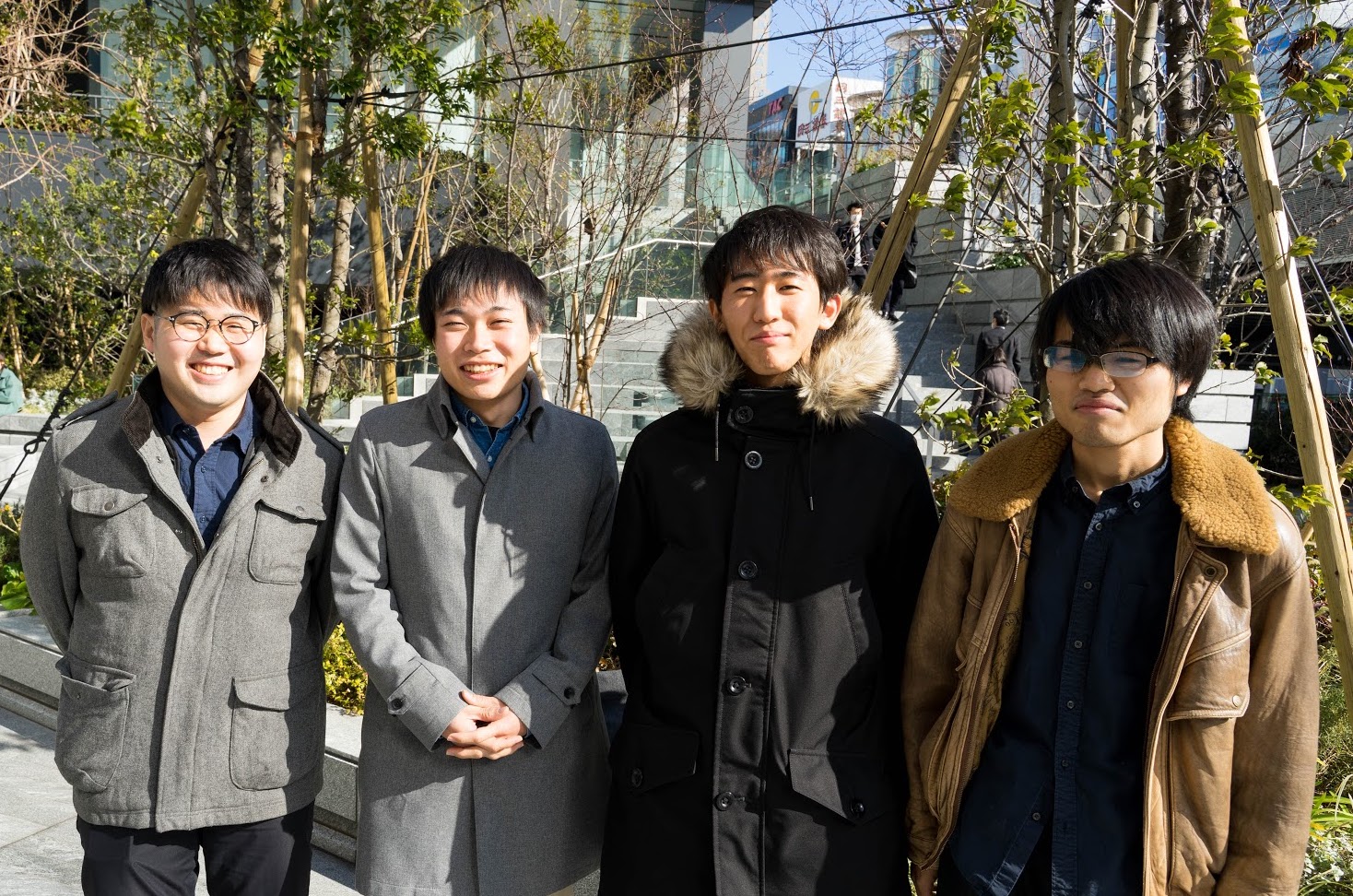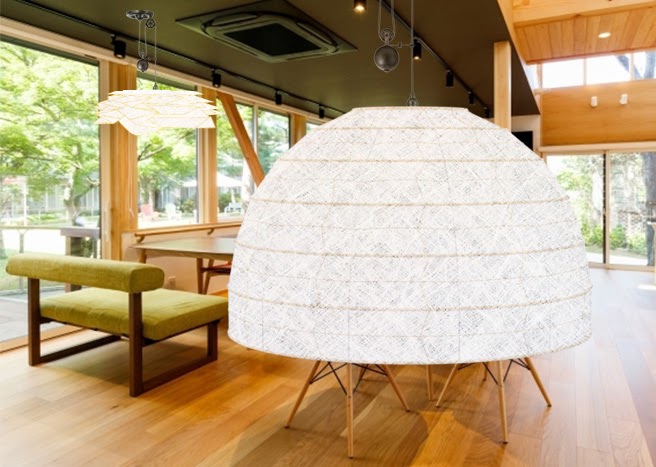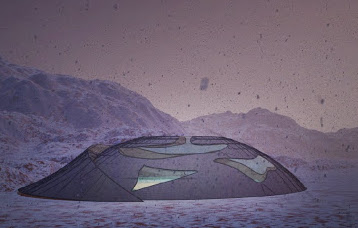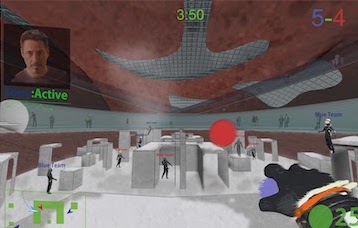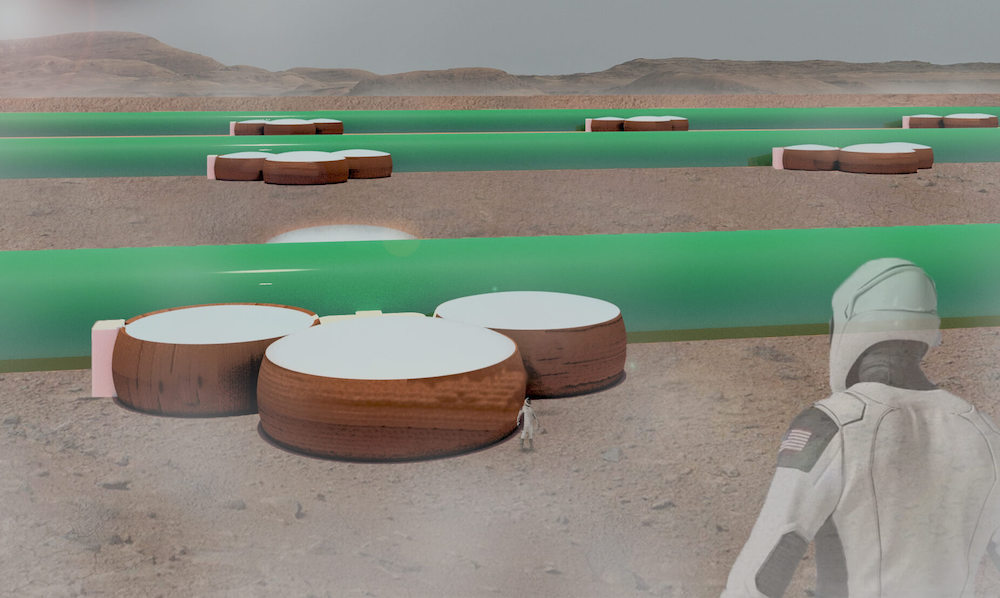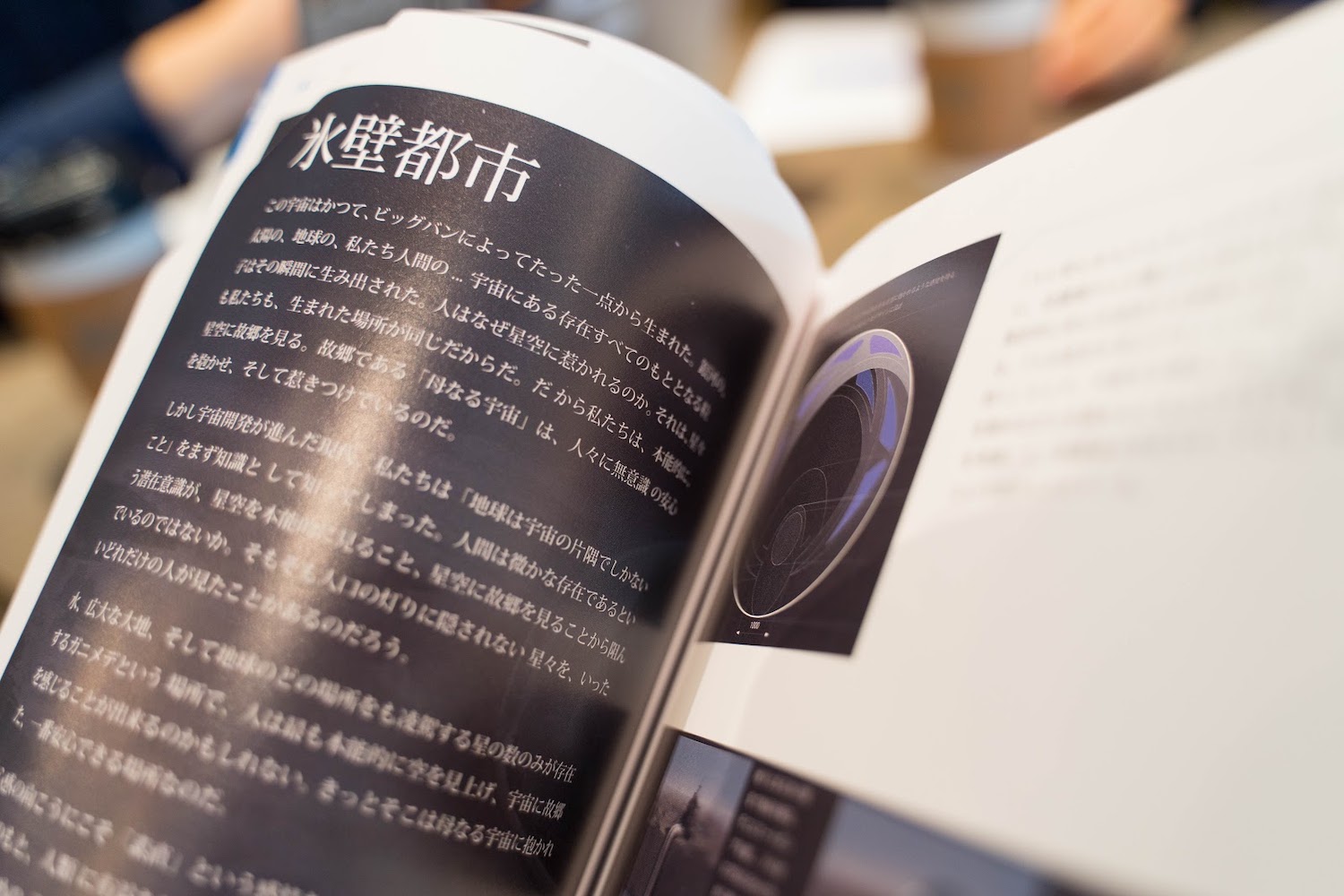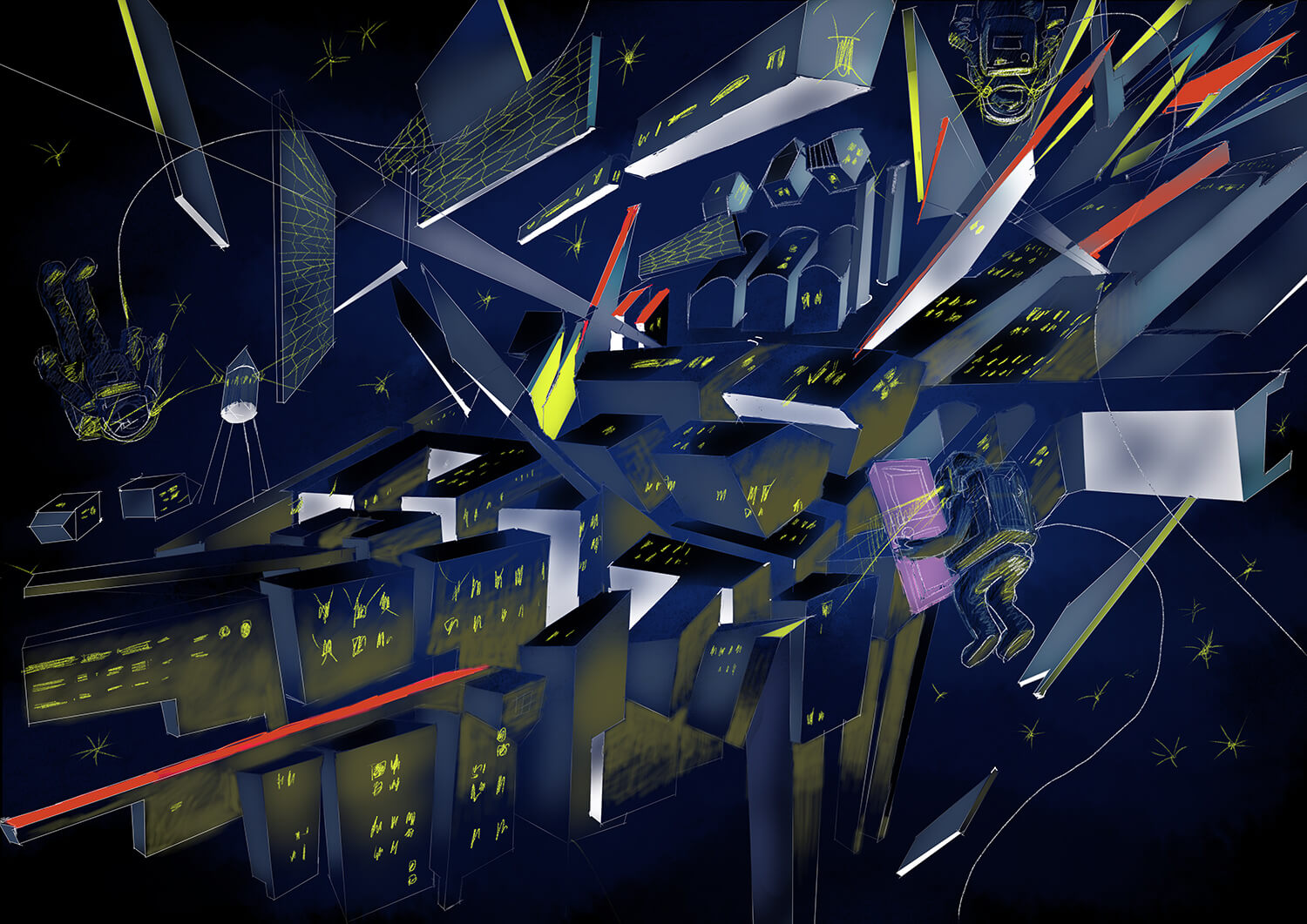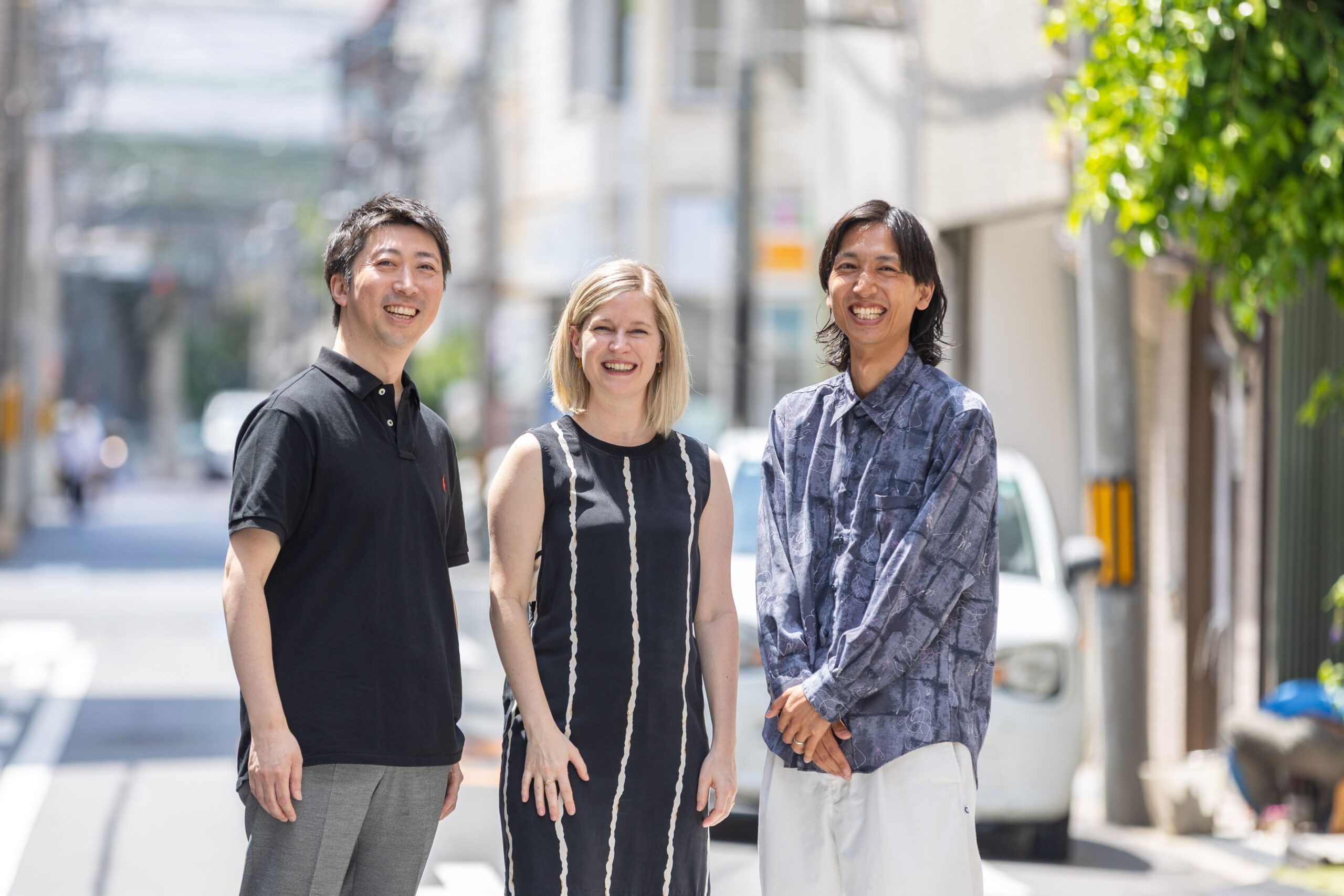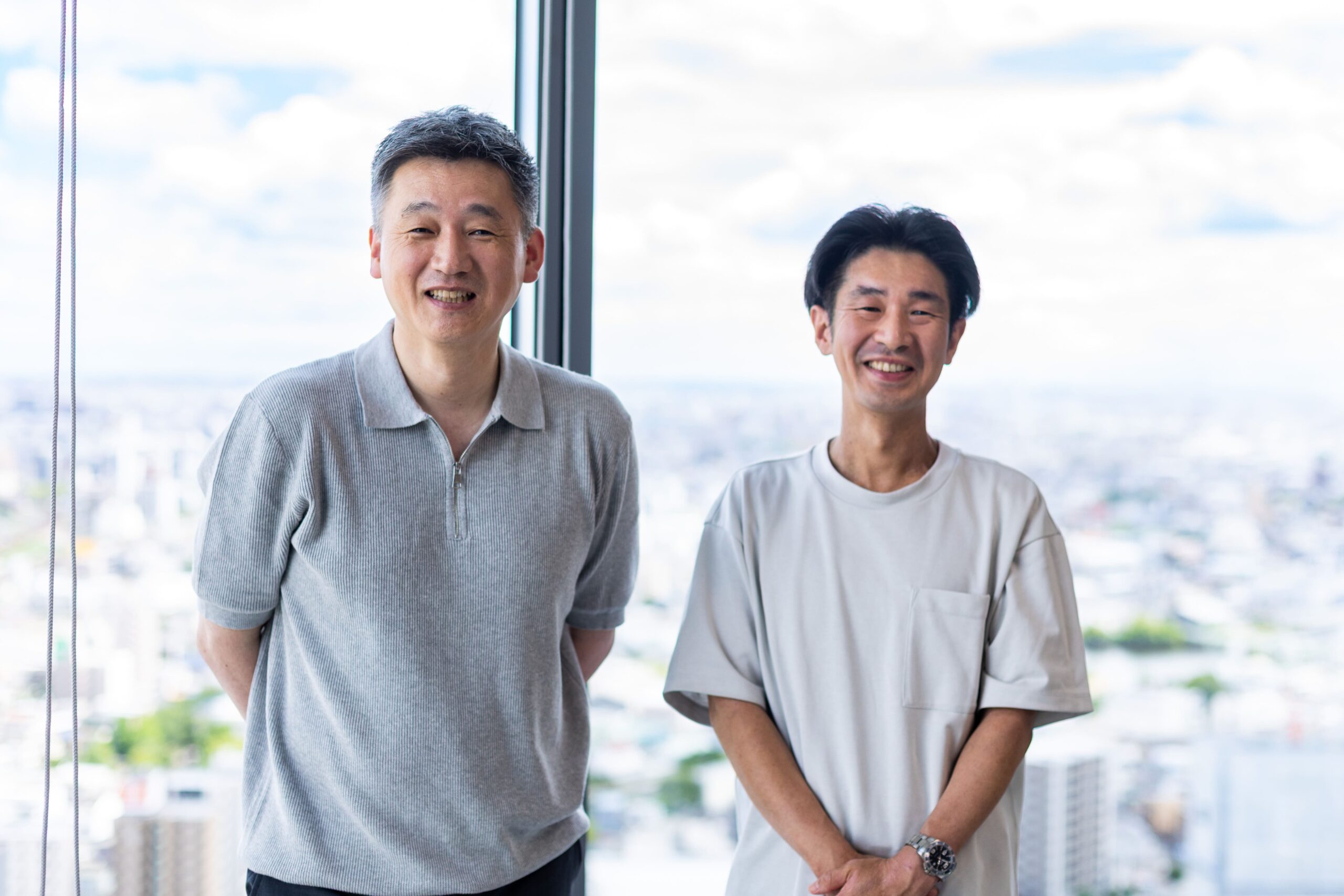宇宙は「行く」場所から、「住む」場所へ
左から株式会社OUTSENSE 堀井さん、宇宙建築サークルTNL 長谷川さん、穂積さん、水口さん
みなさんが所属されている団体TNLは、宇宙建築に関心のある人が集まっているのですか?
長谷川:はい、正式名称は宇宙建築サークルTNLです。日本で唯一宇宙建築を専門とされている東海大学、十亀教授のもとに集まったメンバーで構成されており、「宇宙建築賞」や、宇宙建築ワークショップの企画なんかをしています。
やっぱり新歓コンパでは、宇宙食が出たり?
そうですよね。ちなみに宇宙でお酒飲んだ人っているんでしょうか?
穂積:原則禁止されていますが……。
堀井:国際宇宙ステーション(以下、ISS)で、ロシアの方が飲んだんじゃないかと、そんな噂があります(笑)。
やっぱりウォッカなんですかねえ(笑)。堀井さんはTNLのOBとお聞きしましたが、今はどんな活動をされているのですか?
堀井:学生時代にはTNLに所属していたのですが、今はTNLから派生して会社になった株式会社OUTSENSEに所属しています。
「折り紙構造」の社会実装に取り組んでいて、特に十亀教授が開発された「ソガメ折り」の活用に力を入れています。
ソガメ折り、動画拝見しました!見ててすごく気持ちいいですよね。FUJI ROCK FESTIVALなんかで配布される場内マップを思い出しました。名刺サイズのものを引っ張るとA3サイズぐらいにびーろんて広がるやつ。
堀井:それは「ミウラ折り」ですね。まさに、宇宙技術が民間に転用された例です。宇宙用に開発された技術が、地球の暮らしを豊かにしている例って実はたくさんあるんです。カーナビや空気清浄機なんかもそうですし。
へー!
堀井:ミウラ折りが平面状態からより大きい平面に展開するのに対し、ソガメ折りは平面あるいは立体から、三次元に展開できるのが特徴です。
どんな可能性があるんでしょうか?
堀井:例えばですがオープンスペース内に、仮設的にパーソナルスペースをつくることができます。テーブルの周りに椅子が4つあって、その上の電球にかぶさっているシェードがソガメ折りの構造物になっているとするじゃないですか。そのシェードを展開するとドーム状に広がって、4人でじっくり話せる半個室になります。
左上:収納されたイメージ 右:展開後のイメージ ©OUTSENSE inc.
なるほど!いちいちパーテーションを出してくる必要がないわけですね。企業の健康診断なんかでも活躍しそうです。
他にも、ダクトなどの利用方法も検討していて、例としては、洪水などで大量の水が流れ込んだときだけ拡張する、グネグネ動くダクトとか。そうして活用の場を拡げつつ、いずれは宇宙構造物の製造ができるようになり、ぼくらの技術を使ったものが月に立つ日が来るのを目指しています。
フレキシブルダクト ©OUTSENSE inc.
宇宙用に開発された技術が、地球の暮らしを豊かにしている例って実はたくさんあるんです。カーナビや空気清浄機なんかもそうですし。
堀井
送料、1kgあたり1億円
今回、事前に調べて知ったんですけど、月ってすごく遠いんですね。
ISSが地上から400kmの場所を飛んでるのに対して、月は38万km。時間にすると?
穂積:片道で3,4日程、月を周回して帰ってくる場合は1週間程かかります。
そんなに!いつも見えてるから勘違いしちゃうけど、尋常じゃなく遠い…。
堀井:物を運ぶのにも多大なコストがかかります。宇宙空間への運搬には1kgあたり100万円かかるとされていて。
月の場合は?
話題のあの人がダイエットすると、1キロあたり1億の価値が!それは質量の話ですが、もちろん容積にも制限があるわけですね?
堀井:あります。 トラックなどと一緒で積み込むスペースに限りがあるので、お金がかかるのはもちろん、「本当に宇宙に持って行く価値があるか」が議論されます。
そんな貴重なスペースを勝ち取って構造物を運び、作られるのが宇宙建築なんですね。
堀井:そうです。テントのようなものを現地で膨らませるインフレータブル構造とか、ルナコンクリートと呼ばれる素材を現地で精製して3Dプリンタで成形する方法とかいくつかあるのですが、ぼくらOUTSENSEがやっているのが展開構造物を使った方法です。
穂積:ぼくらTNLは、折り紙構造を得意とされる十亀教授のもとに集まりつつも、見聞を広めるために多様な建築手法について勉強しています。たとえばこれは、火星で雪合戦のスタジアムを建築する案なんですが……。
国際コンペティションで世界第2位になった作品「Martian Yukigassen(火星で雪合戦)」
内観パース
かっこいい!
穂積:ありがとうございます。Mars City Designという国際コンペティションで、世界第2位になった作品「Martian Yukigassen」です。お題は「火星でスポーツ」でした。火星では水の雪ではなく、ドライアイスの雪が降っていますから、ドライアイスがもつ昇華(固体→気体に状態変化すること)の性質を利用した雪合戦を提案しました。
これの作り方は?
穂積:3Dプリントですね。他の手法を扱ったものですと、つい先日わたしたちが主催し、かつ出品もできる「宇宙建築賞」に出されたこんな作品があります。
外観。内部に人口農場を備えた火星の住宅。ユニット式にすることで、様々な暮らしや人口規模に対応できる。外壁はマーシャンコンクリート、内壁は藻類からつくられるプラスチックを材料とし、すべて現地で調達できるものを3Dプリントして建設される。
この、「人をダメにするソファ」みたいなやつは、やわらかいんですか?
水口:これはマーシャンコンクリートと言いまして、火星の土で作るコンクリートですね。
現地生産なんですね。いちいち名前がかっこいい!
火星では水の雪ではなく、ドライアイスの雪が降っていますから、ドライアイスがもつ昇華(固体→気体に状態変化すること)の性質を利用した雪合戦を提案しました。
穂積
働き方改革は宇宙でも
これまでお聞きした内容から考えると、現時点で宇宙建築は空想上のものという認識でいいんでしょうか?
堀井:そうですね。「建築」が必要になるのは人が「居住」、つまり長期滞在するときだけなので、これまでは需要がありませんでした。しかし昨今ではイーロン・マスクのスペースXにジェフ・ベゾスのブルーオリジンなど、民間も含めて宇宙開発競争が激化していて、需要も高まっています。
具体的な計画も?
堀井:NASAが火星を目指す「アルテミス計画」を発表しています。それに対し、宇宙ベンチャーの会社がこぞって売り込みをかけている段階です。
パートナー企業、まだ決まっていないんですね。
堀井:はい。そして2028年までには、宇宙船ではない、いわゆる月面基地を作ろうとしています。
地球とはやっぱり、環境が違うんですか? 無重力だから、重い物も運びやすいのかなとか思っちゃうんですけど。
堀井:重力で言えばそうなんですが、地球より過酷な環境です。レゴリスというガラスに近い素材の砂が舞っていますし、大気がないので、地球なら地表につく前に大気圏で燃えてしまう微少隕石が絶えず落下してくるし、オゾン層がカットしている宇宙放射線にもさらされます。
たいへんだ……。構造物を持ち込んだとして、組み立ては宇宙飛行士が?
「ドライバー不要!」の家具みたいな。
堀井:ですです。ただ、有人で作るとなるとすごくコストがかさむんですよね。宇宙飛行士のお給料って、高い(笑)。もちろん、お金だけじゃなくて時間も貴重なので、いかにコスパよく宇宙建築を作るかも、積極的に議論されています。展開構造物を持って行った後は開くだけとか、ロボットに任せられるものは任せようとか。
宇宙も働き方改革中なんですね。
長谷川:そうですね(笑)。ロボットといえば、こんなものもあります。
スズメバチの巣みたいですね。
穂積:これはHASSELというチームが提案した火星の宇宙建築なんですが、テントで居住区を作って、その周りを現地生産のコンクリートで3Dプリントしてく方法をとっています。2:20ぐらいを見てもらうと……。
すごい! ロボットが自ら足場を作って、それが幾層も重なり、防御壁のようなものが出来上がっていきますね。これはそうでもないですけど、映画なんか観てても宇宙建築には丸っこいものが多いですよね。
堀井:気圧効率がいいのが、ドーム状あるいは、かまぼこ状なんです。内圧がかかりづらいよう合理的に考えると、そうなります。
いかにコスパよく宇宙建築を作るかも、積極的に議論されています。展開構造物を持って行った後は開くだけとか、ロボットに任せられるものは任せようとか。
堀井
アーティストが 宇宙に行く意味
みなさん、どうしてそんなに宇宙建築に夢中になれるんでしょうか?
長谷川:ぼくはまだ誰もやった人がいなくて、こうやって考えるだけで最先端にいられるのが魅力だと思っています。取り組んでいる人がまだ少ないので、今日みたいに「専門家」としてお声がかかることもありますし、宇宙飛行士の方にも、驚くほど簡単に会えますし(笑)。
なるほど。学生さんでもすぐトップランナーになれるわけですね!
穂積:実際に作った場合の話ですけど、ぼくは南極の昭和基地みたいに「月といえばこれ!」ってものが作れるかもしれないと思うとワクワクします。月の場合、今はアポロが立てたアメリカの国旗がその役割を担っていますよね。次は建物になると思っているので楽しみです。
「令和基地」が出来るかもしれない!
水口:ぼくは、人が宇宙に行きたくてたまらなくなるようなものが、宇宙建築ならできるんじゃないかと思うんです。
宇宙旅行に芸術家を連れて行くとおっしゃってる方もいますが、あれ、めちゃくちゃ価値があることだと感じていて…。
アートの破壊力とか、人の心を動かす力って凄まじいじゃないですか。
月を往復した芸術家が作った作品。それを見た人が、「一生かかってでもお金貯めて月に行くぞ!」となる可能性は充分にある。
アートの破壊力とか、人の心を動かす力って凄まじいじゃないですか。 月を往復した芸術家が作った作品。それを見た人が、「一生かかってでもお金貯めて月に行くぞ!」となる可能性は充分にある。
水口
爆発するかのように拡散する建物
「住む」という言葉を聞くと複数の住居が集まった「まち」を連想してしまいます。宇宙を描こうとしてみたら、いかに「まち」のアイコンが重力と戦っているのか思い知らされました。 階段やアーチなどの街を認識する要素は重力のない世界では意味がないからです。そこでザハ・ハディドの初期ドローイングのような暗闇の中で爆発するように四方に拡散していく建物の集合体のようなまちを描いてみました。
座二郎(通勤漫画家)
『POP UP SOCIETY』とは
『POP UP SOCIETY』は、一般の方に業界への興味を持ってもらい、中長期的に建設仮設業界の若手人材不足に貢献することを目指し、ASNOVAが2020年3月から2022年3月まで運営してきた不定期発行のマガジンです。
仮設(カセツ)という切り口で、国内外のユニークで実験的な取組みを、人物・企業へのインタビュー、体験レポートなどを通じて紹介します。










